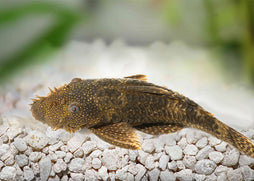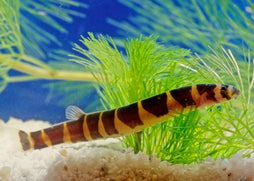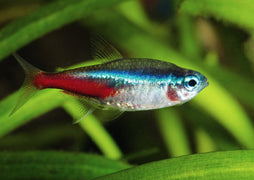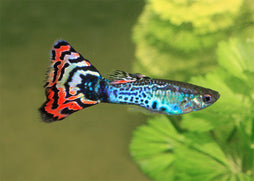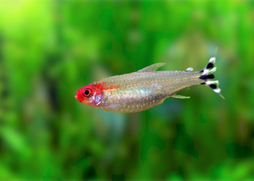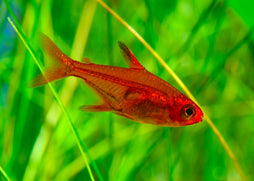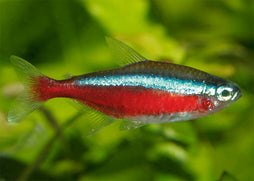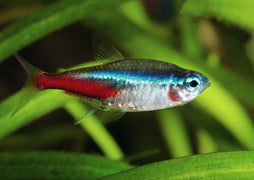Description
Lepidiolamprologus nkambae is a predatory cichlid species endemic to the rocky, sediment-rich shorelines of Lake Tanganyika. With its elongated body, bold vertical striping, and aggressive territorial instincts, this species commands attention both visually and behaviourally. Though less commonly kept than other Tanganyikan cichlids, L. nkambae is prized by advanced aquarists for its unique hunting behaviour and striking appearance. It requires specific care and a well-structured environment to thrive.
Features of Lepidiolamprologus nkambae
• Grows up to 12–15 cm in length
• Slender body with bold black vertical bars over a light grey or tan base
• Highly predatory and territorial, especially when mature
• Males grow larger and develop more pronounced fin extensions
• Solitary or pair-bonded in the wild, often territorial over caves
• Lifespan ranges from 8 to 10 years in optimal conditions
The best aquarium size for Lepidiolamprologus nkambae
A minimum of 200 litres is required for a single adult or bonded pair. For mixed Tanganyikan setups or to keep multiple individuals, a tank of 300 litres or more is strongly advised to allow for adequate territory and minimise aggression.
Tank Mate Compatibility for Lepidiolamprologus nkambae
• Julidochromis marlieri
• Neolamprologus brichardi
• Cyprichromis leptosoma
• Altolamprologus calvus
• Synodontis multipunctatus
Diet for Lepidiolamprologus nkambae
As a micropredator, this species requires a protein-rich, carnivorous diet. Feed a varied mix of high-quality carnivore pellets, frozen krill, mysis shrimp, chopped prawns, and occasional live foods. Avoid flake foods and plant-based items, which do not meet its nutritional needs. Feed sparingly to maintain water quality and mimic natural hunting rhythms.
Aquarium Setup Lepidiolamprologus nkambae
Aquarium Filtration
Strong biological and mechanical filtration is essential due to this species’ sensitivity to poor water quality. Use a canister or sump system rated for large tanks. Aim for a turnover rate of at least 6–8 times the tank volume per hour. Maintain pH between 8.0–9.0 and hardness around 12–20 dGH.
Aquarium Plants
Live plants are generally not necessary and may be uprooted. If desired, use tough, anchored species like Anubias or Java fern, but expect limited plant coverage in rocky Tanganyikan aquascapes.
Aquarium Lighting
Moderate lighting is best to replicate their dim, rocky habitats. Avoid overly bright lighting, which can stress the fish and encourage unwanted algae growth.
Aquarium Heating
Keep water temperature steady between 24–26 °C using a reliable heater. Stability is more important than absolute value, particularly for breeding pairs.
Aquarium Substrate
Use a mix of fine sand and small gravel to reflect their natural environment. This substrate supports natural digging and does not trap uneaten food as easily as coarser materials.
Aquarium Decorations
Create complex rock structures with caves and crevices, using slate or lava rock. These territories are crucial for aggression management and courtship behaviour. Avoid sharp edges and ensure rocks are securely placed to prevent collapses caused by digging.




